When it comes to staying dry while out in the wilderness, you have two main choices: Gore-Tex or waterproof material. Both have their pros and cons, which can make it difficult to decide what’s right for you. In this guide, we will explore the differences between Gore-Tex and waterproof materials, and provide some tips.
What Is Waterproof?
There are diverse types of waterproof materials on the market today.
What Is Gore-Tex Fabric?
In a nutshell, GTX is a waterproof, breathable fabric. It’s made with an inner layer of water-resistant material (most commonly polytetrafluoroethylene or PTFE), and an outer layer of durable fabric, usually nylon. The layers are bonded together using heat and pressure, which creates billions of tiny pores in the fabric.
Gore-Tex first hit the market in 1969 as a way to keep people dry during outdoor activities. But it wasn’t until the 1980s that Gore-Tex really took off, thanks to some clever marketing campaigns that positioned it as the ultimate in high-performance waterproof gear. These days, you’ll find it in all sorts of outdoor clothing and footwear, from hiking boots to ski jackets.
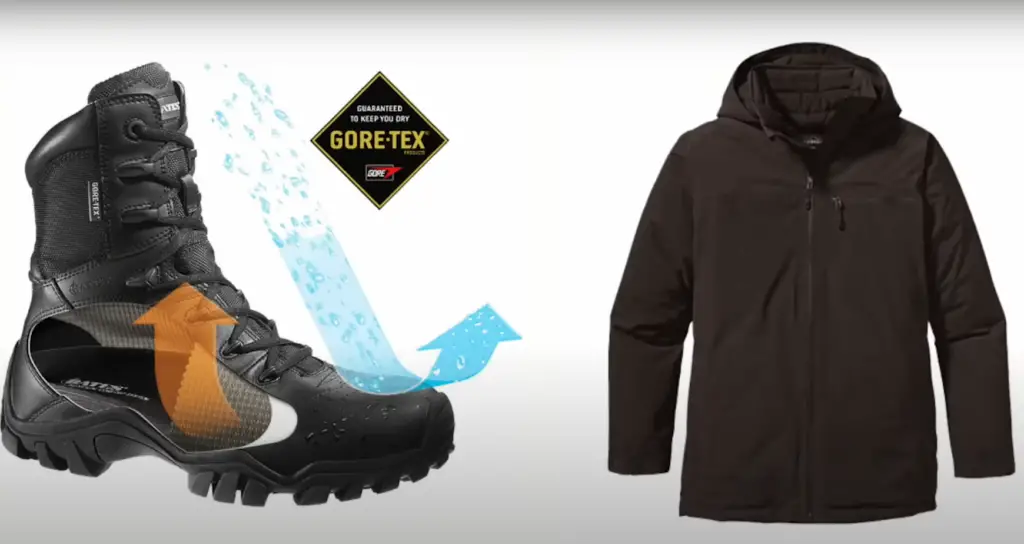
And it’s not just for serious adventurers – GTX has made its way into casualwear, with brands like The North Face and Patagonia using it to make stylish (and functional) everyday pieces. [1]
How Is It Different From Normal Waterproofs?
GTX is made up of an outer layer and a membrane. The membrane is full of tiny pores which are around 20,000 times smaller than a water droplet. While water vapor can pass through the GTX, actual water droplets cannot penetrate it.
Waterproof materials, on the other hand, work by repelling water off their surface. They don’t have any pores or gaps that water can seep through so they offer better protection against wet weather conditions. However, this also means that they don’t allow your skin to breathe as much as GTX do which can make you feel clammy in warm weather conditions.
Let’s take a look at some of the advantages and disadvantages of each.
How Does It Work In The Waterman’s Clothing Range?
Gore-Tex is often used in jackets, pants, gloves, and footwear to keep the wearer dry while allowing body heat and perspiration to escape. The ePTFE is laminated to a textile backing material using an adhesive.
What’s So Special About Gore-Tex?
GTX is a waterproof, breathable fabric membrane used in outdoor apparel and footwear. It’s made of expanded polytetrafluoroethylene that’s been treated with a durable water-repellent finish. Gore-Tex is used to make products that are both water-resistant and windproof.
One of the main benefits of Gore-Tex is that it’s highly breathable. This means that it allows your body to release sweat and moisture while still keeping you dry from the outside elements. Gore-Tex is also windproof, which makes it ideal for activities like hiking, skiing, and cycling.
Another advantage of Gore-Tex is that it’s durable. With proper care, a GTX jacket can last for years. Gore-Tex is also easy to care for and can be washed in a regular washing machine.
One of the main disadvantages of Gore-Tex is that it’s more expensive than other waterproof fabrics on the market. Gore-Tex is also not as effective in extremely cold weather or wet conditions. [2]
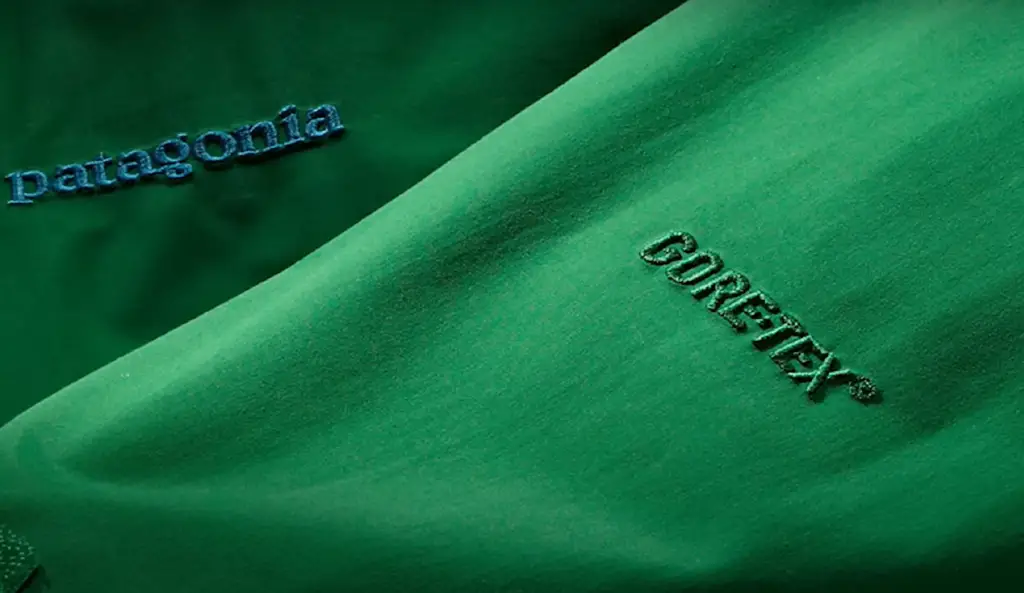
If you’re looking for a w/proof, breathable fabric that will keep you dry in all kinds of weather, then Gore-Tex is a great option. However, if you’re looking for a cheaper alternative, then water-resistant materials like nylon or polyester may be a better option.
Is Gore-Tex 100% Waterproof?
There are two types of GTX fabrics: those with a waterproof/breathable laminate construction and those with a waterproof/windproof/breathable tricot construction. Laminate construction is best for high-activity use, like backpacking and running, because it’s more durable and has a higher moisture vapor transfer rate (MVTR). Tricot construction is better for lower-activity use, like casual wear and light hiking, because it’s softer and more comfortable next to your skin. [3]
GTX fabrics are available in a wide range of weights, textures, and colors. The heaviest and most durable GTX fabrics are used in mountaineering clothing and footwear. More lightweight GTX fabrics are often used in running shoes and rain jackets.
What Is the Difference Between Waterproof And Gore-Tex?
The main difference between waterproof and GTX is that waterproof fabrics are completely impermeable to water, while Gore-Tex is a breathable fabric. This means that while waterproof fabrics will keep you dry in the rain, they won’t allow your body to ventilate and can cause you to overheat. On the other hand, Gore-Tex is designed to allow body heat and moisture to escape, making it ideal for activities like hiking or running where you’re likely to work up a sweat.
Another key difference is that waterproof materials are typically much less expensive than Gore-Tex. This is because Gore-Tex is a trademarked name and requires a licensing fee from manufacturers. Waterproof fabrics, on the other hand, can be made by anyone without paying a fee. [4]
So, which is better? That really depends on your needs. If you’re looking for a fabric that will keep you dry in the rain but don’t mind if it’s not breathable, then waterproof materials are a great option. However, if you need a fabric that’s both waterproof and breathable, then Gore-Tex is the way to go.
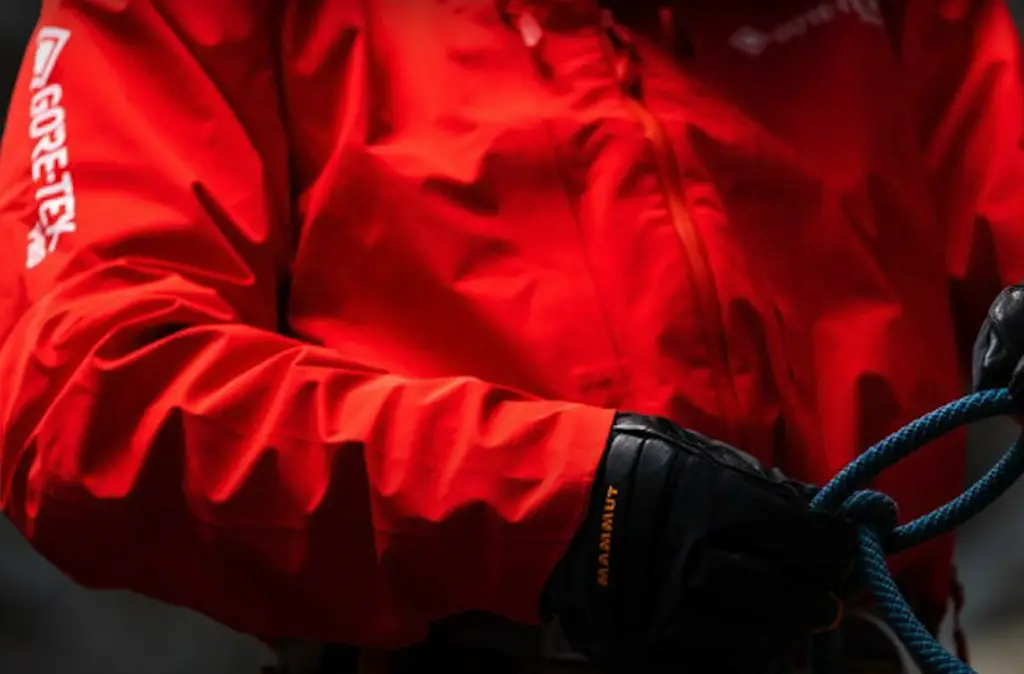
Pros and Cons
Benefits of Gore-Tex
Gore-Tex fabrics are known for being extremely durable and long-lasting. And because they’re breathable, they won’t cause you to overheat or sweat excessively.
Drawbacks of Gore-Tex
Gore-Tex can be more expensive than other types of waterproof fabrics. It’s also not as easy to find, since not all stores carry it. And finally, because it’s a trademarked name, some people prefer not to use products with GTX for ethical reasons.
Benefits of Waterproof Materials
Waterproof materials are often less expensive than Gore-Tex and easier to find. They’re also great for keeping you dry in the rain or snow. And because they’re impermeable to water, they can also be used for things like lining shower curtains or protecting electronics from moisture damage.
Drawbacks of Waterproof Materials
Waterproof materials are not as breathable as GTX, so they can cause you to overheat. They’re also not as flexible or comfortable to wear. And finally, because they’re not as durable, they may need to be replaced more often.
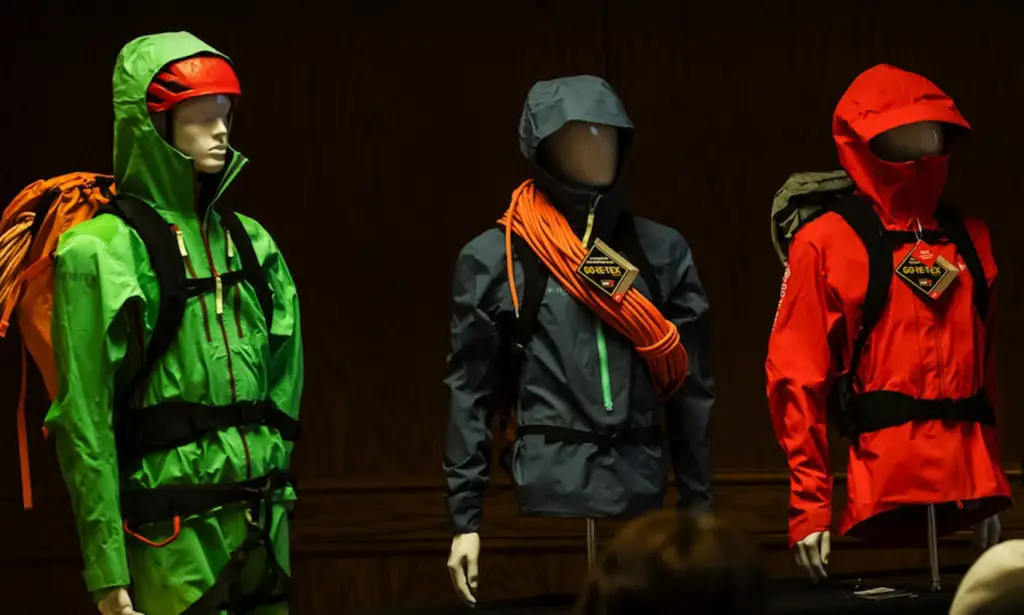
FAQ
Is Gore-Tex the best waterproof material?
Gore-Tex is a popular waterproof material, but it’s not the only option. There are several other types of waterproof materials on the market.
So, what’s the best waterproof material? It depends on your needs. GTX is a good choice for people who need a durable, breathable, and water-resistant fabric. However, there are other options available if you have different needs.
Waterproof fabrics are made from two types of materials: synthetic and natural fibers. Synthetic fibers include polyester, nylon, and PVC. Natural fibers include wool and cotton.
For example, synthetic fibers are typically more durable and water-resistant than natural fibers. However, natural fibers tend to be more breathable.
When choosing a waterproof fabric, it’s important to consider your needs and what type of activity you’ll be using the fabric for. GTX is a good all-around choice for most people, but there are other options available if you have specific needs.
Does Gore-Tex mean waterproof?
No, it does not. Gore-Tex is a type of water-resistant material. Waterproof materials are impermeable to water, meaning that they will not allow any water to pass through them. GTX, on the other hand, is permeable to water vapor. This means that while it will repel liquid water, it will allow water vapor (i.e. sweat) to pass through it. [5]
What are the disadvantages of Gore-Tex?
Gore-Tex is not a perfect material:
- One of the biggest disadvantages of GTX is its price. GTX is usually more expensive than other waterproof materials on the market;
- Another disadvantage is that it is not as durable as some other waterproof materials. GTX can tear and wear out over time, which means you will have to replace your GTX gear more often than gear made with other waterproof materials;
- Finally, Gore-Tex does not breathe as well as some other waterproof materials. This means that if you are wearing Gore-Tex in hot weather, you may get sweaty and uncomfortable [6];
Can water go through Gore-Tex?
The answer to this question is a little complicated. GTX is a waterproof, breathable fabric, meaning that it is designed to keep water out while still allowing sweat and body heat to escape. However, because of the way GTX is constructed, it can sometimes allow small amounts of water vapor and moisture through.
This isn’t necessarily a bad thing though! The pores in Gore-Tex are actually so small that they’re almost impossible for water droplets to get through – but they’re just the right size to allow sweat and body heat to escape. So while you may sometimes see Condensation on the inside of the GTX jacket, it’s nothing to worry about and won’t affect the performance of the fabric.
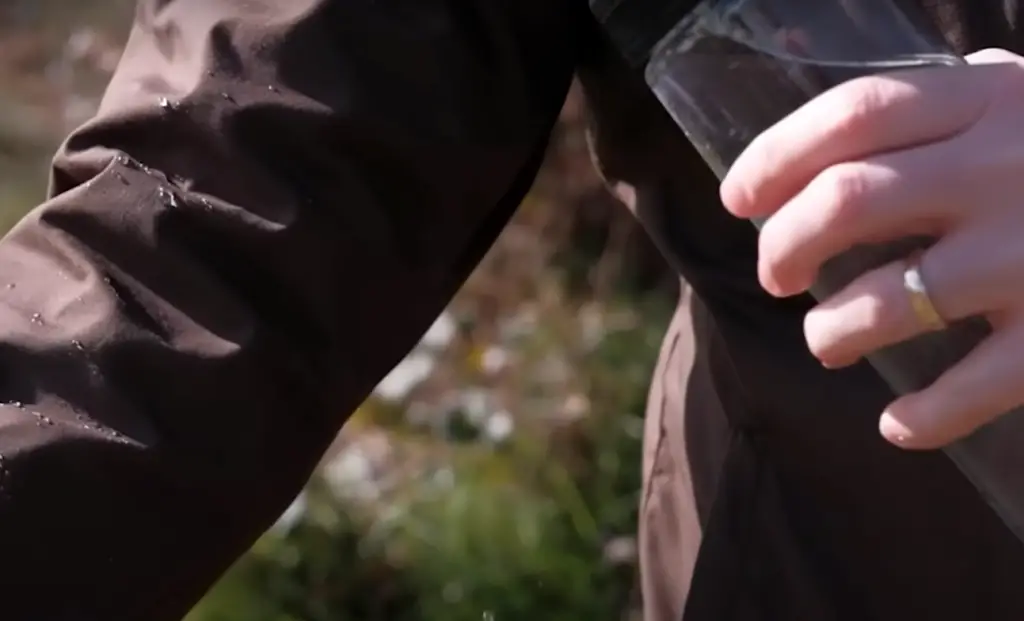
If you’re looking for a fabric that will completely keep water out, Gore-Tex is not the right choice. However, if you’re looking for a fabric that will keep you dry and comfortable in even the wettest conditions, Gore-Tex is an excellent option.
Is Gore-Tex harmful?
There is a common misconception that Gore-Tex is harmful to the environment. This is not true! Gore-Tex is made of polytetrafluoroethylene (PTFE), which is a type of plastic. PTFE is actually very stable and does not break down easily in the environment. In fact, it has been used in many applications where environmental safety is a concern, such as non-stick cookware and medical implants.
Useful Video: Is Gore-Tex Worth It? Waterproof Comparison Test
Conclusion
When it comes to Gore-Tex vs. Waterproof Material, there is no clear winner. It really depends on your needs and budget. If you need the extra features that Gore-Tex offers, then it’s worth the investment. However, if you don’t need those features or are on a tight budget, then waterproof material is a good option.
Gore-Tex is more expensive than waterproof materials, but it’s worth the investment if you plan on being in wet conditions often. Waterproof materials are a good budget-friendly option for those who don’t need the extra features that Gore-Tex offers.
Hopefully, this guide has helped you understand the difference between Gore-Tex and waterproof materials.
References:
- https://thefashionstarter.com/2022/01/12/what-is-gore-tex-fabric-properties-how-its-made-and-more/
- https://www.gearassistant.com/is-gore-tex-worth-it/
- https://www.sport-conrad.com/blog/en/waterproof-vs-water-repellent-a-comparison-of-gore-tex-co-membranes/
- https://www.watermanscountrysupplies.co.uk/blog/latest-news/what-is-the-difference-between-gore-tex-waterproof-fabric/
- https://www.winfieldsoutdoors.co.uk/blog/everything-need-know-gore-tex/
- https://www.gearassistant.com/disadvantages-of-gore-tex/

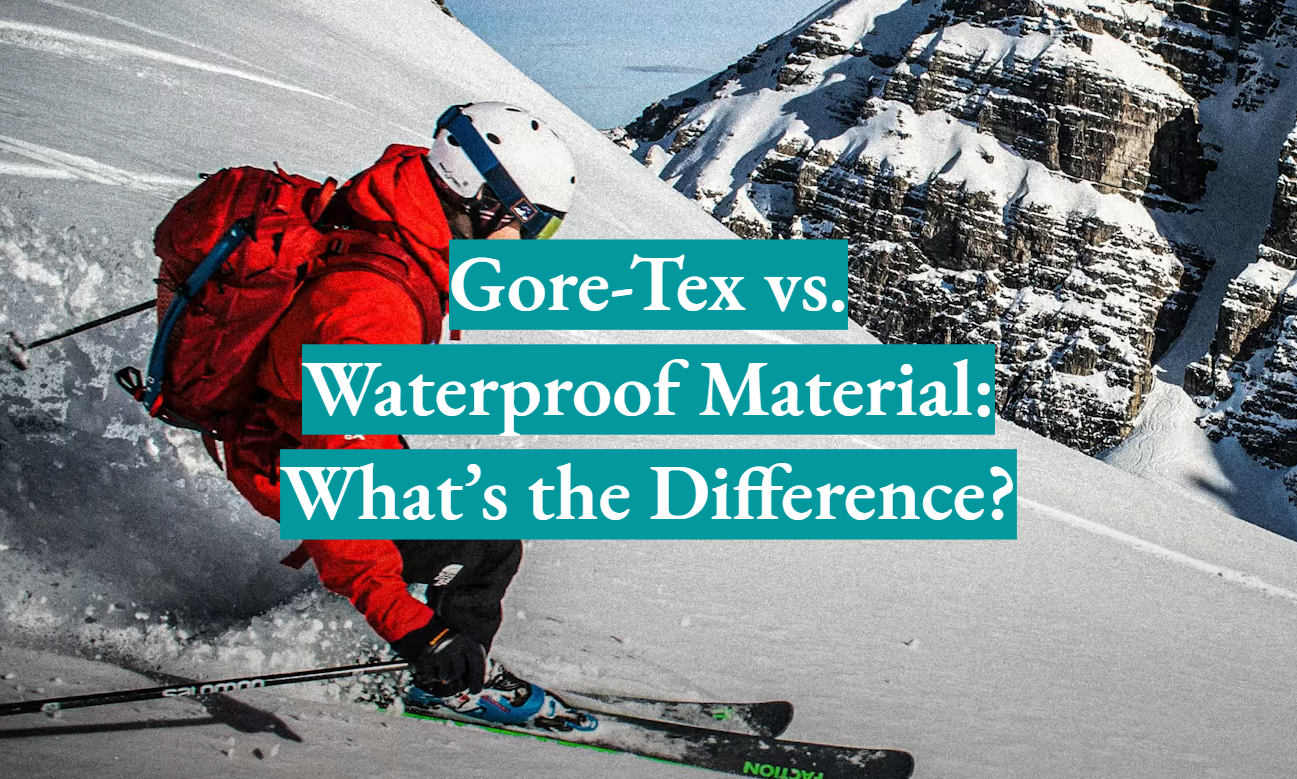
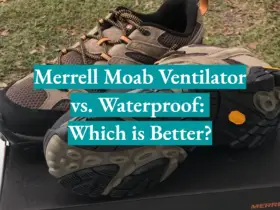
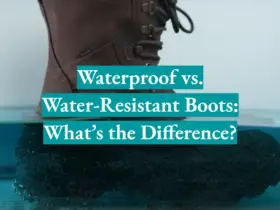
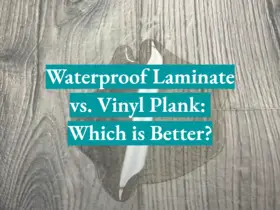
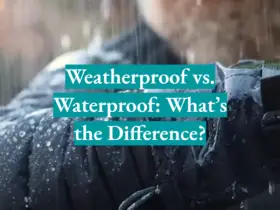
Leave a Reply